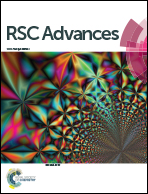Physicochemical interface effect in Cu2O–ZnO heterojunction on photocurrent spectrum
Abstract
This study reports the effect of oxide heterojunction solar cell (HSC) arrangement on the solar photocurrent spectra and the physical correlation to the interfacial band electronic structure. Based on the p-Cu2O/n-ZnO oxide junction, two types of stack arrangements were prepared to observe the solar photocurrent spectral change: FTO/Cu2O/ZnO/Al and FTO/ZnO/Cu2O/Al structures. In the photovoltaic cell structure, FTO was utilized as the p-type electrode, Cu2O as the p-type semiconductor, ZnO for the n-type semiconductor and Al as the n-type electrode. The HSC characteristics were characterized using ultraviolet-visible spectroscopy, X-ray photoelectron spectroscopy (XPS), diode current–voltage measurements, and finally, incident photon-to-current efficiency (IPCE). As a result, the IPCE spectra of the HSC were largely affected by (1) the bandgap of the first layer semiconductor, which is the first layer receiving incidence light regardless of the bandgap energy, and (2) the interfacial electronic band offset values in each stack. Therefore, this result offers a possible mechanism for why the HSC consisting of the FTO/Cu2O/ZnO stack shows better IPCE response than the FTO/ZnO/Cu2O stack in the view of electronic band-alignment.


 Please wait while we load your content...
Please wait while we load your content...